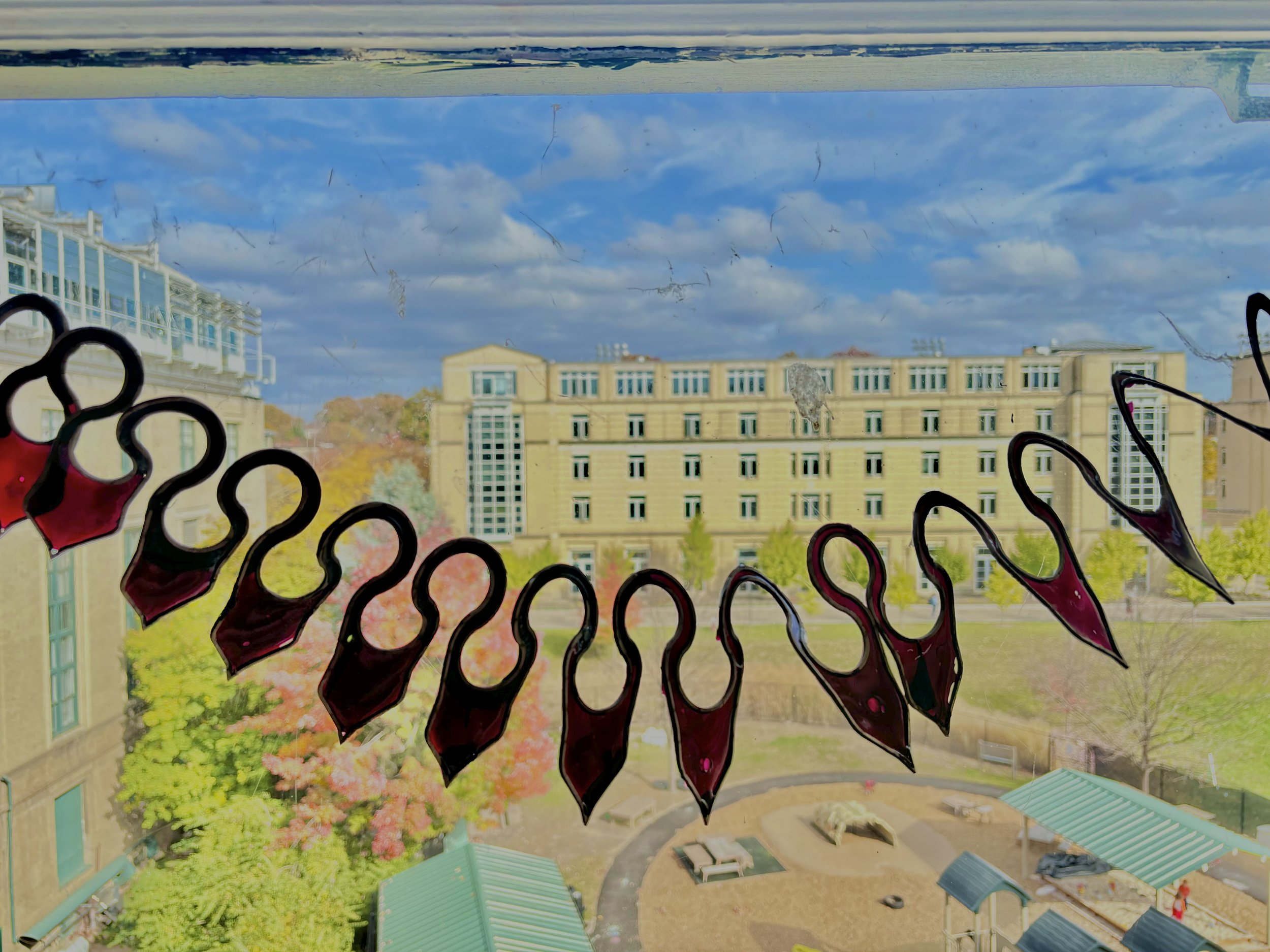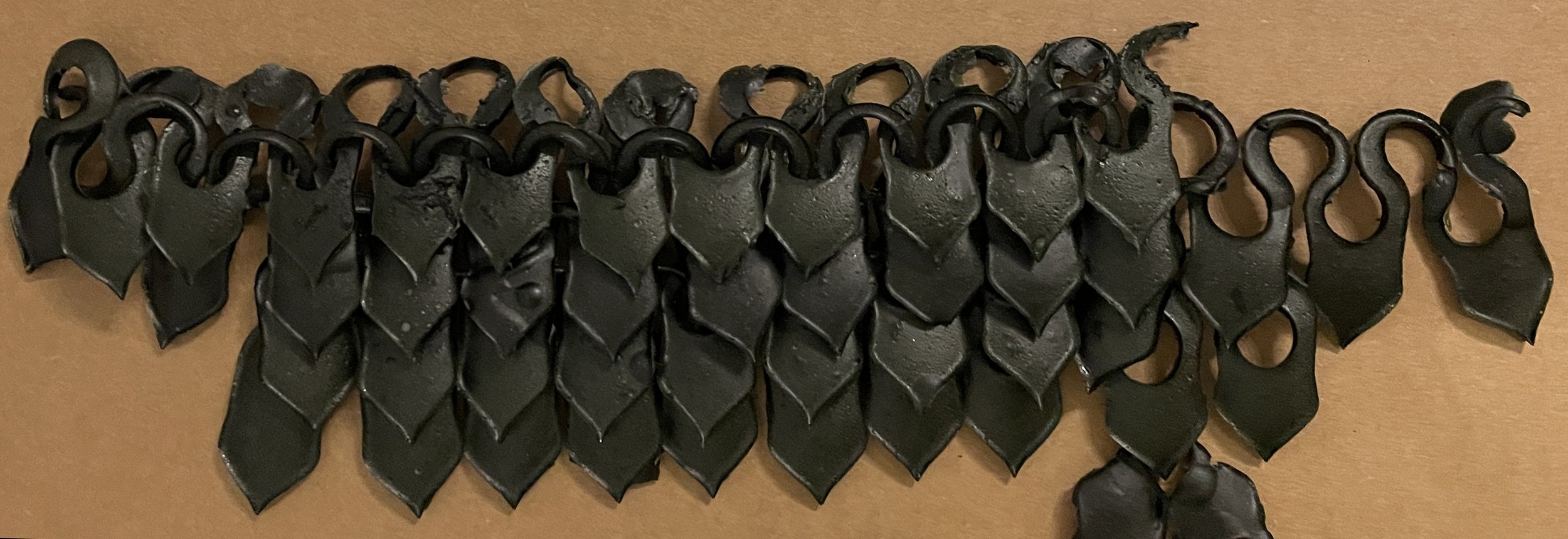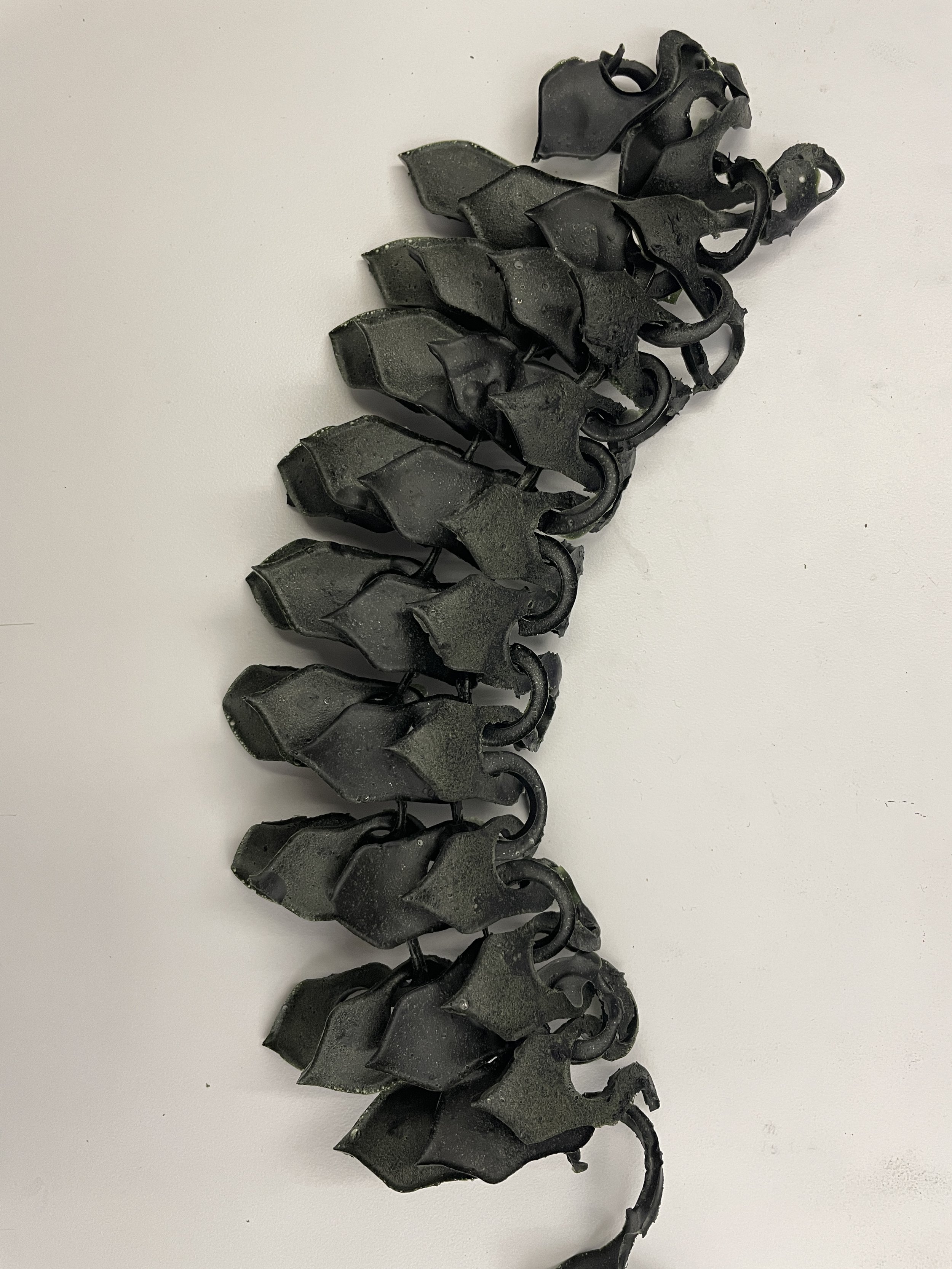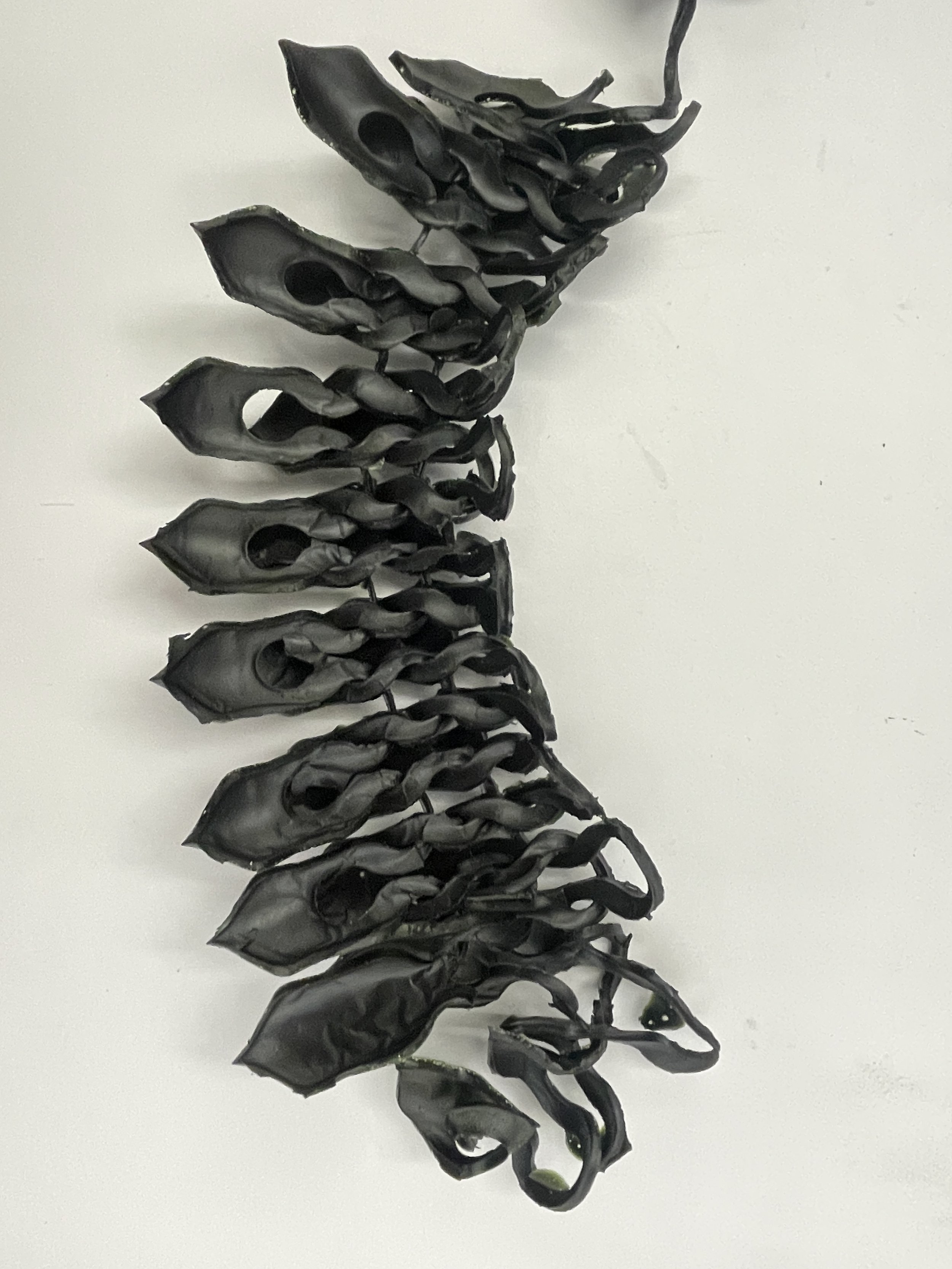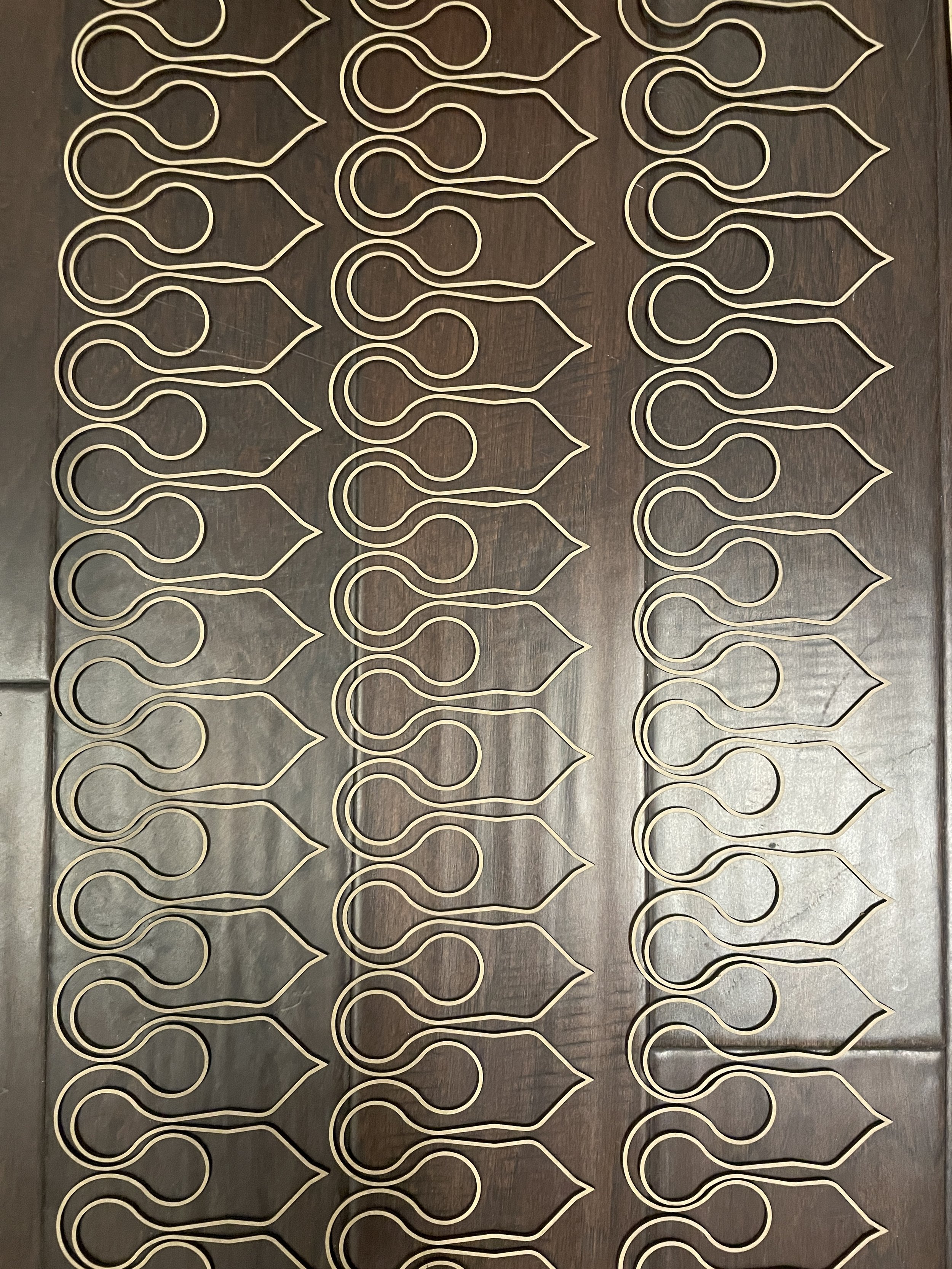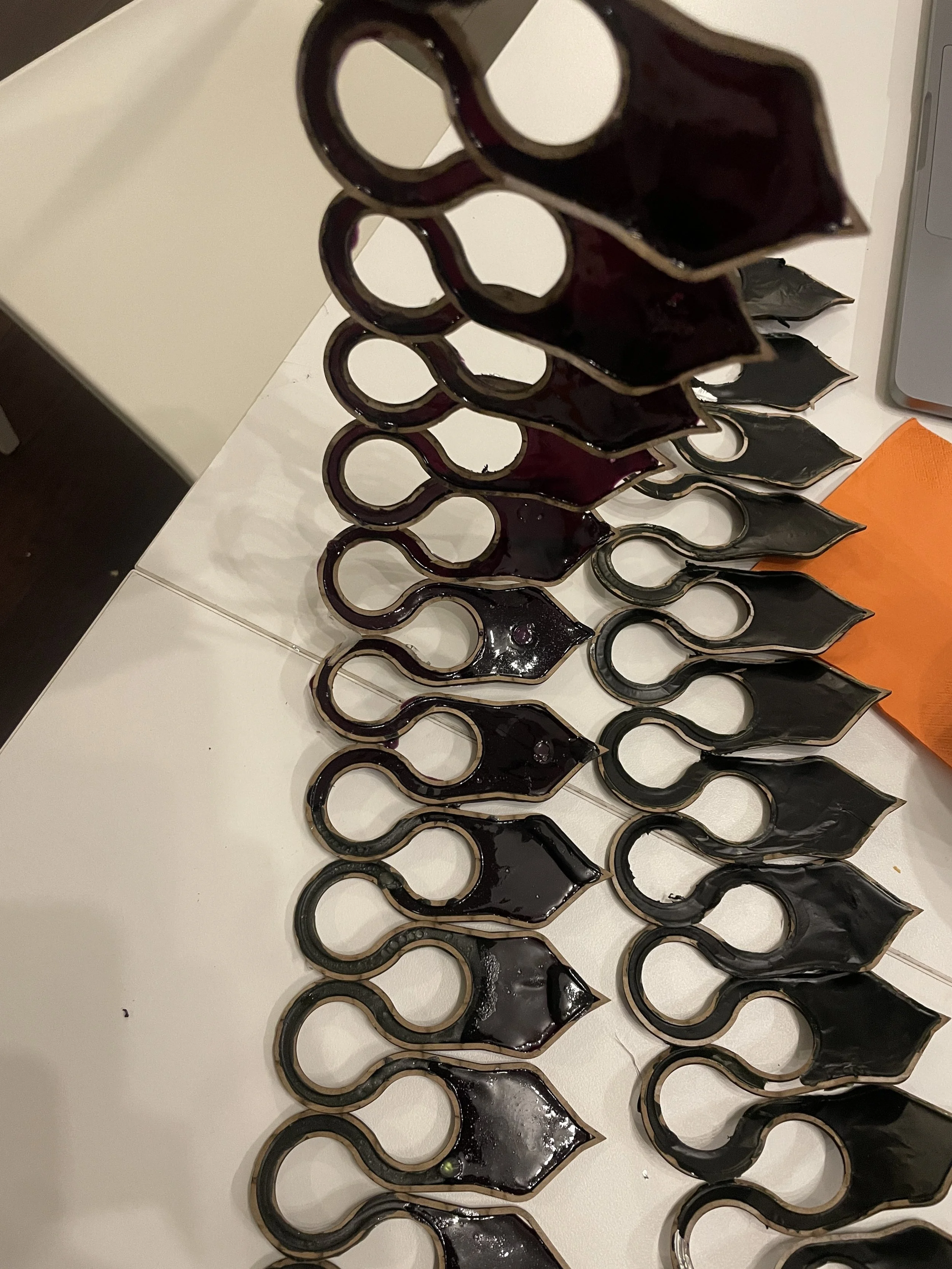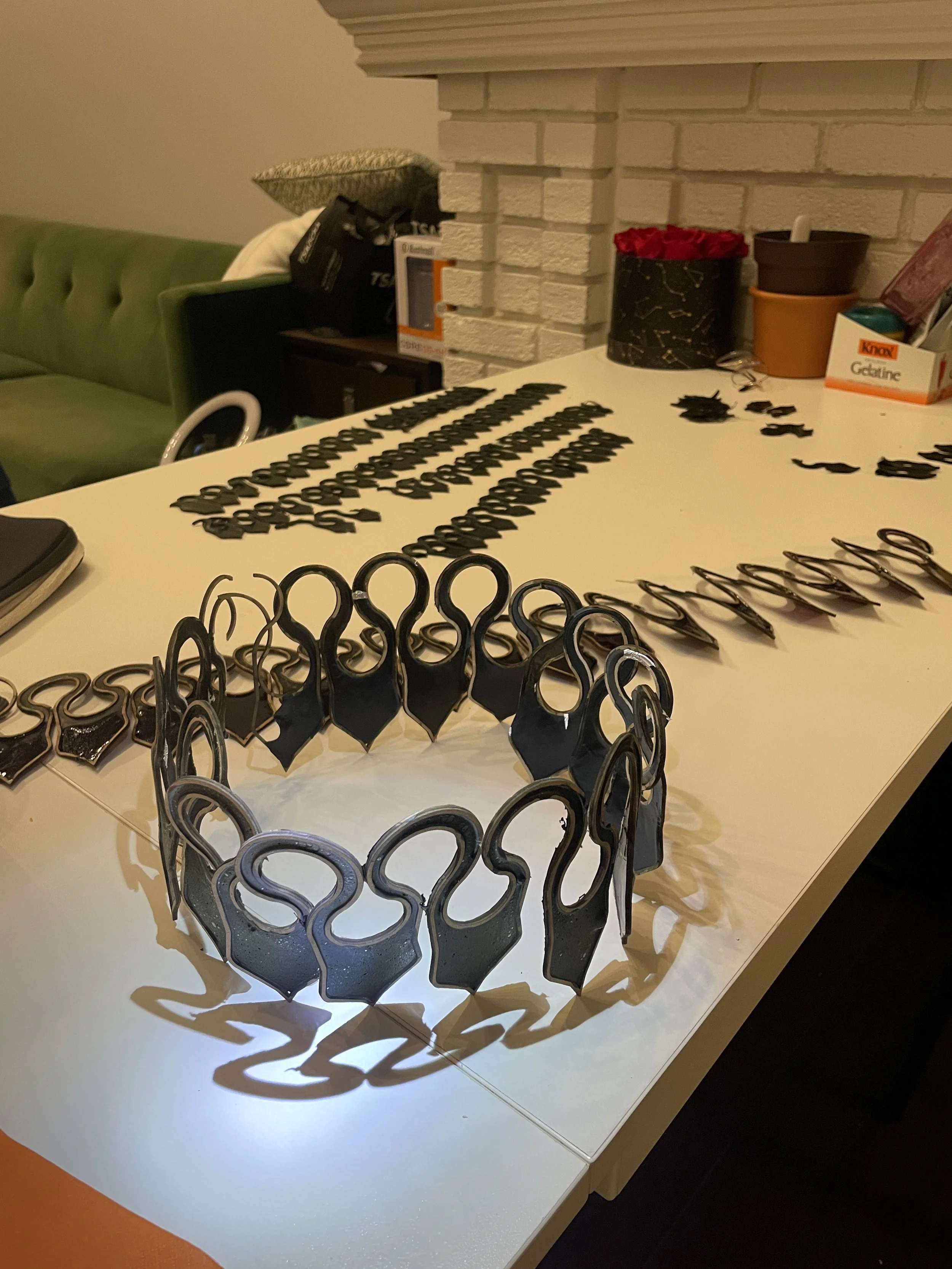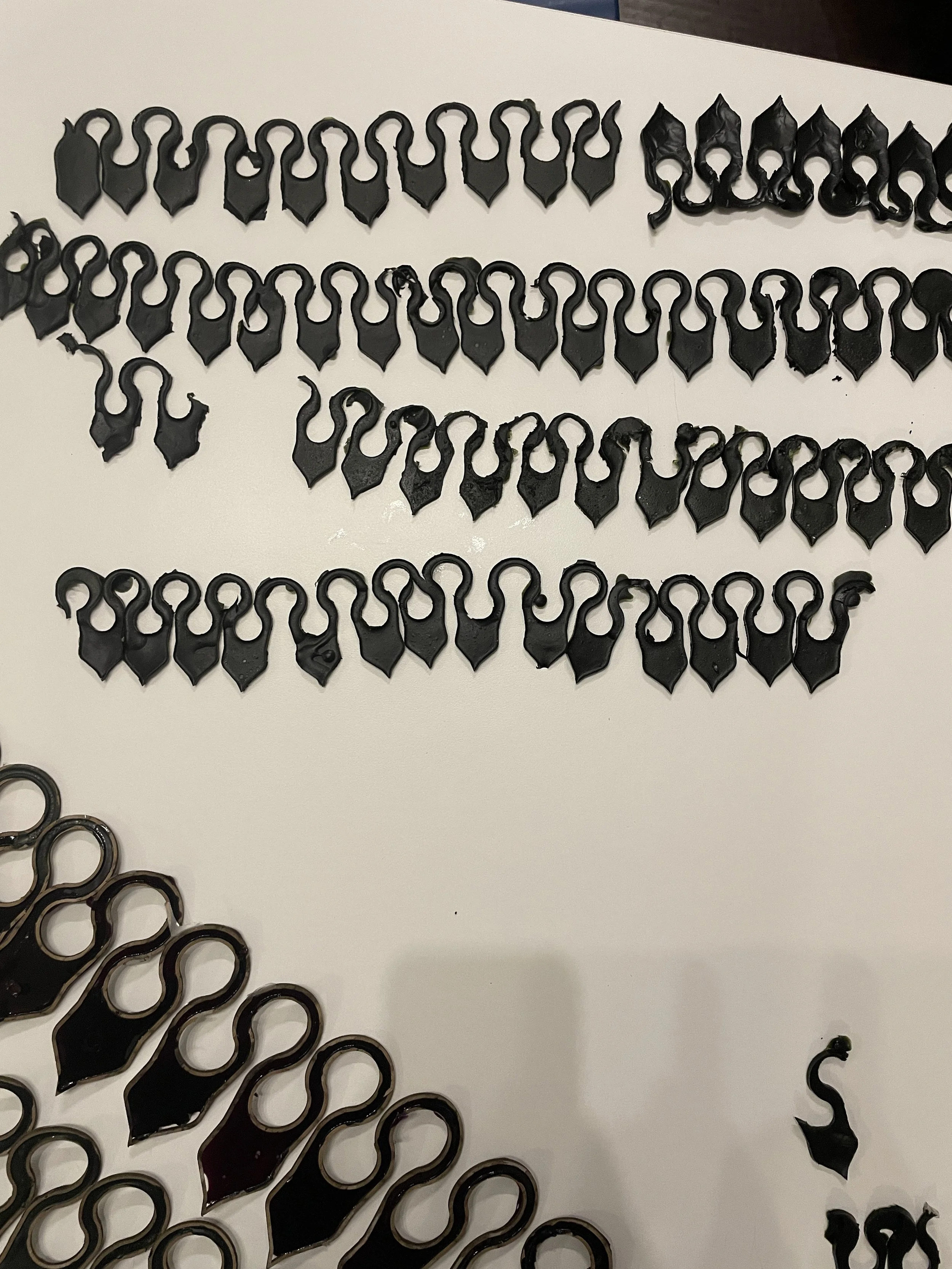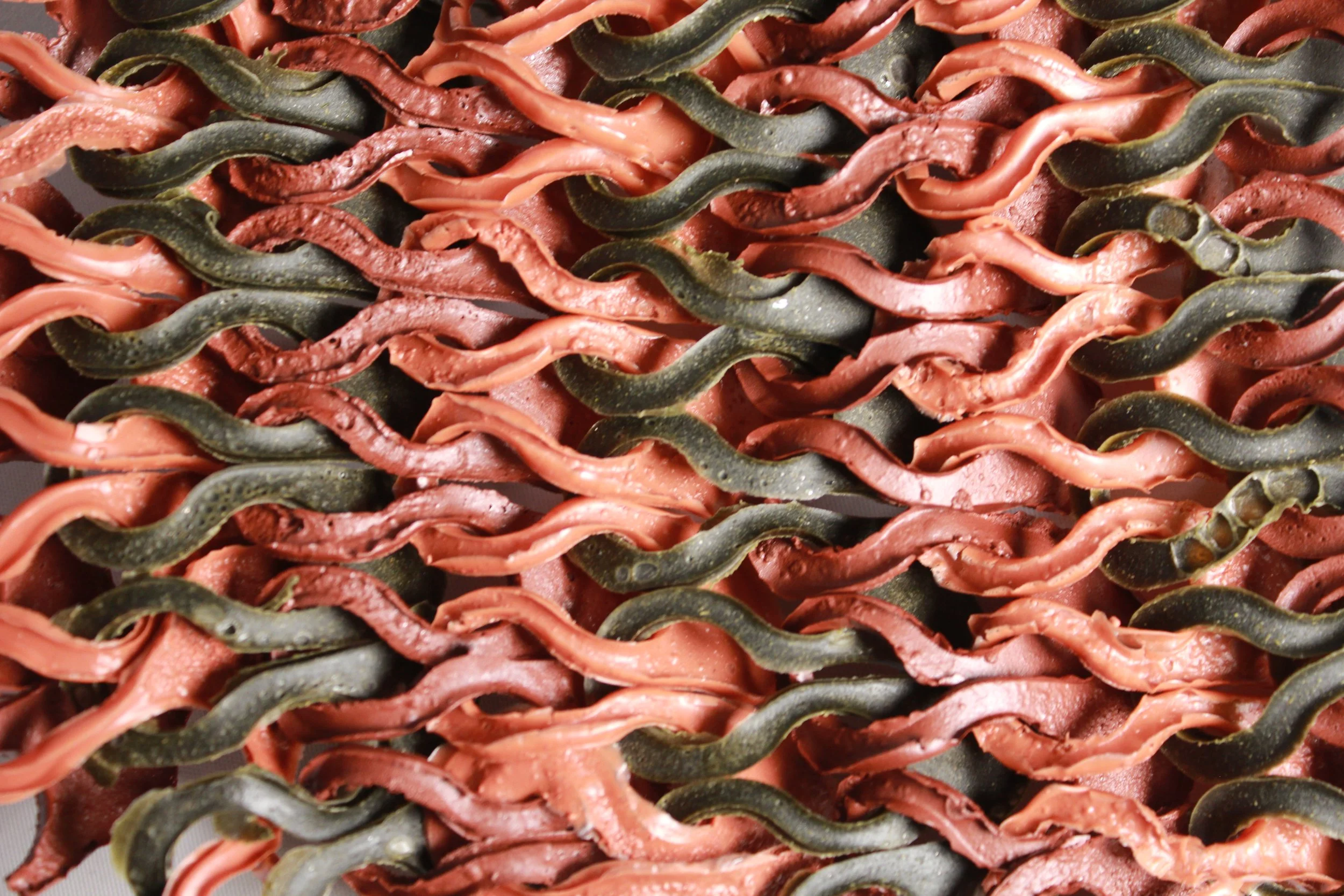
BIOPLASTIC CHAINMAIL: FLEXIBLE, MODULAR BIOMATERIAL SYSTEMS
Inspired by architectural materials like shingles and scale-like facades, this project explores how small batches of bioplastic can interlock to form larger, flexible structures. Using laser-cut molds, I created interlocking chainmail-like bioplastic links that maintain flexibility while showcasing varying levels of translucency depending on their composition. The resulting material demonstrates the potential for bioplastics in soft, modular systems that could be adapted for applications such as wearables, home goods, or even architectural facades.
I experimented with two fabrication techniques:
Acrylic Mold Chainmail – I designed a reusable laser-cut acrylic mold that allowed for precise, repeated pours, ensuring consistency in size and shape.
Bioplastic Composite Chainmail – By embedding ultra-thin chipboard strands into the bioplastic during the pour, I created a more rigid, layered effect, altering both the structural and optical properties of the material.
My biomaterial work was developed through meaningful collaboration and mentorship that I deeply value. Audrey Reiley co-created the Japanese knotweed panels with me, sharing in every aspect from foraging expeditions to material processing and casting. Dana Cupkova provided invaluable guidance and mentorship throughout the process, offering both the pedagogical framework through her Shaping Environments class at Carnegie Mellon University and ongoing feedback that shaped this research. Jessica Wu and Tobi Aina were valued teammates in the class that developed this project.
